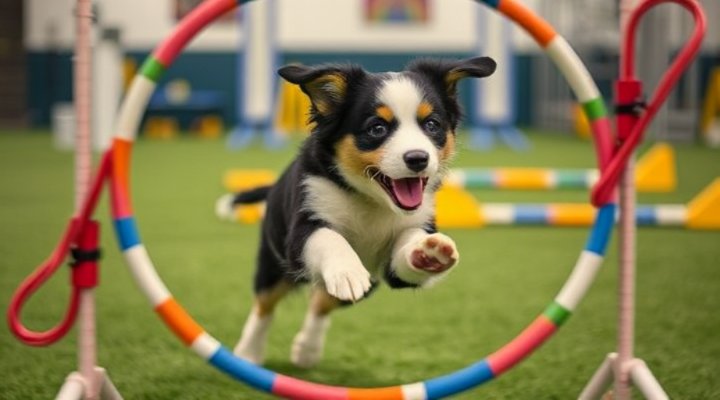Puppy dog training is an exciting journey that strengthens the bond between you and your furry friend while establishing important behaviors. Whether you’re starting with basic commands or progressing to advanced skills, consistency and positive reinforcement are key to success.

The Fundamentals of Puppy Training
Before diving into complex skills, every puppy needs to master the basics. According to the American Veterinary Medical Association, early training significantly impacts a dog’s long-term behavior. Start with these essential commands:
- Sit: The foundation for all other commands
- Stay: Crucial for safety and impulse control
- Come: Potentially life-saving recall command
- Leave it: Prevents unwanted chewing or eating
- Down: Teaches calm behavior
Our article on Puppy Training Tips offers additional insights into establishing these fundamental skills.

Positive Reinforcement: The Gold Standard
Modern puppy dog training emphasizes reward-based methods rather than punishment. The Association of Professional Dog Trainers confirms that positive reinforcement creates lasting behavioral changes while strengthening the human-animal bond.
Effective rewards include:
- Small, tasty treats
- Verbal praise with enthusiastic tone
- Physical affection (petting, scratches)
- Playtime with favorite toys
Timing is crucial – deliver rewards within 1-2 seconds of the desired behavior. For more on this approach, check out our guide to Positive Reinforcement Dog Training.

House Training and Crate Training
Two of the most practical aspects of puppy dog training involve teaching proper elimination habits and creating a safe space. Crate training serves multiple purposes:
- Provides security and den-like environment
- Aids in house training by controlling accidents
- Prevents destructive behavior when unsupervised
- Creates positive travel experiences
Remember, the crate should never be used as punishment. Our article on Best Way to Crate Train a Puppy provides step-by-step instructions.

Progressing to Advanced Skills
Once your puppy masters basic obedience, you can introduce more challenging activities:
- Leash manners: Walking without pulling
- Off-leash control: Reliable recall in distracting environments
- Trick training: Fun commands like shake, roll over, or play dead
- Agility basics: Navigating simple obstacles
- Canine good citizen skills: Polite behavior in public
For comprehensive guidance on advancing your training, see our Complete Dog Training Guide.

Troubleshooting Common Challenges
Every puppy presents unique training challenges. Here are solutions for frequent issues:
| Challenge | Solution |
|---|---|
| Biting/nipping | Redirect to chew toys, use bitter spray |
| Excessive barking | Teach ‘quiet’ command, identify triggers |
| Jumping up | Ignore behavior, reward four-on-floor |
| Chewing | Provide appropriate outlets, puppy-proof |
| Separation anxiety | Gradual desensitization, create positive associations |
For persistent behavioral issues, our Dog Behavior Modification article offers professional strategies.
Training Through Developmental Stages
Puppy dog training should adapt as your dog grows:
- 8-12 weeks: Socialization, basic commands
- 3-6 months: Reinforcement of basics, introduction to leash
- 6-12 months: Advanced commands, public manners
- 12+ months: Specialized skills, refinement
Remember that consistency across all family members is crucial for effective puppy training. Establish clear rules and stick to them.
Keywords Related to Puppy Dog Training
puppy obedience training, dog training basics, positive reinforcement training, crate training puppies, leash training, puppy behavior correction, advanced dog commands, canine good citizen, puppy socialization, clicker training

